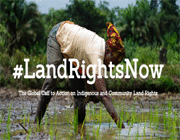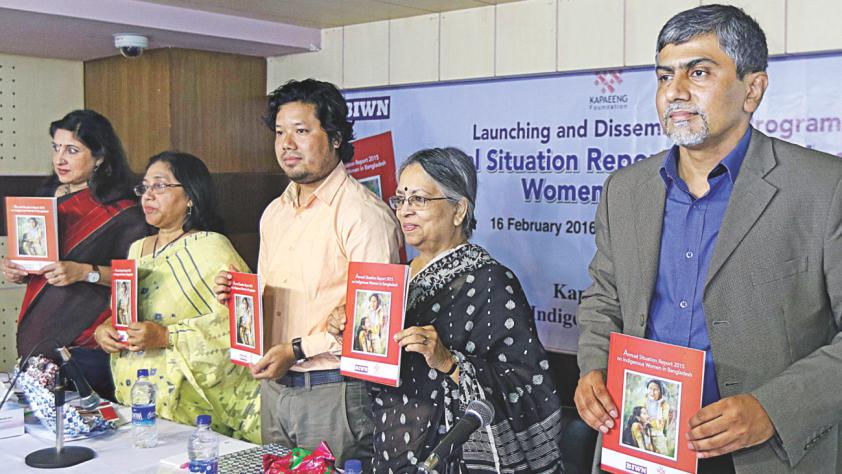
Violence against indigenous women and girls is one of the alarming issues. From 2007 to 2015 a total number of 434 indigenous women and girls were subjected to physical and sexual violence and there is no single case where justice prevailed. In addition, 38 cases occurred in CHT and the rest in the plains out of 69 cases in 2015 and the majority victims were from the CHT. The most striking facet of sexual violence against indigenous women and girls is rape which exceeds other forms of physical and sexual violence in 2015. A total number of 14 cases reported on rape and 12 cases on gang rape, 11 cases on physical assault, 6 on sexual harassment, 16 cases were attempted to rape out of the 69 cases in 2015. It is notable that most of the cases rise out of the land issue and masculine hegemony towards minority indigenous women and the majority perpetrators belong to non-indigenous background.
All these information related to indigenous women were disclosed on 16 February 2016 in a launching and discussion program of Annual Situation Report 2015 on Indigenous Woman in Bangladesh at the Daily Star Bhaban in Dhaka. Kapaeeng Foundation and Bangladesh Indigenous Women’s Network (BIWN) published this report with the support of Manusher Jonno Foundation (MJF).
Former Advisor of Caretaker Government of Bangladesh and Executive Director of Ain O Salish Kendra Advocate Sultana Kamal was present in the programme as chief guest. Prof Sadeka Halim, former information commissioner and teacher of Dhaka University; MJF Executive Director Shaheen Anam; Prof Obaidul Haque of International Relations Department at Dhaka University and Executive Director of Achik Michik Society Sulekha Mrong among others, also spoke at the event while Pallab Chakma, Executive Director of Kapaeeng Foundation chaired the programme. Chaitali Tripura, Joint Convenor of BIWN and Vice Chairperson of Kapaeeng Foundation gave welcome speech. The programme was moderated by Chanchana Chakma, member secretary of BIWN and the key note was presented by BIWN member and North South University Lecturer Parboti Roy.
Addressing as chief guest, Sultana Kamal, also noted human rights activist, said in her speech that increasing violence against indigenous women is tantamount to disregarding the fundamental spirit of the country’s Liberation War. Impunity to the perpetrators of such violence has made the victims even more vulnerable, she said. Today, the division between the minority and the majority has entered into national politics. By equal empowering men and women into politics, the state must ensure the establishment of self-determination of all people. Equality, equal rights, parity can move forward a nation. She also called for full implementation of the Chittagong Hill Tracts (CHT) Accord of 1997 and separate land commission for plain land indigenous peoples to prevent violence against indigenous women and land grabbing.
Professor Sadeka Halim said that violence against indigenous women is used as an ultimate weapon to evict indigenous peoples from their ancestral land. She also said there is number of law for women in government policy but no separate law to protect indigenous women in CHT and plain land. In most of all government policies (ex. National Women Development Policy), indigenous women were addressed only in a single paragraph. She demanded to formulate new policy for indigenous woman.
Shaheen Anam said that women are moving forward in social, economic, and political sector. However, still negative aspects towards women exist in the society. Violence against indigenous women in CHT is used as a tool to implement a particular purpose. Though the Constitution ensures free from discrimination for all, but it is day dream for indigenous peoples. The society and state have to move forward with its diversified nations. No justice in those cases of violence raises big questions about the treatment of minorities and the government must answer why culprits were not punished, she added.
Professor Dr. Obaidul Hague said that indigenous woman are abused due to their indigenous background. The number of violence against indigenous women is increasing day by day. Numerically, the figure of violence against indigenous women might seem low but in proportion of the indigenous population it is very high. Follow-up report of violence incidents against indigenous women most of time does not maintain properly and in that case media should play strong role to sensitize people to ensure justice for indigenous women.
Sulekha Mrong said that though Garo are matriarchal society but women are still lags behind that decision making process. Women only get property ownership and all other social, political, economical work has been completely manage by men.
In her welcome speech Chaitali Tripura said that the figure of violence against Bengali women and indigenous women are not same. Indigenous women are more vulnerable and marginalized than mainstream woman. Indigenous woman are abused for three reasons. Firstly being a woman, secondly being an indigenous woman and thirdly because of the land. Indigenous women are constantly harassed in CHT and plain lands, but the state remains silent. To ensure the safety of indigenous women must ensure the constitutional recognition as indigenous, full implementation of CHT Accord and separate land commission for indigenous people in plain, she added.
Pallab Chakma said that the figure of violence against the indigenous women continues to a alarming extent. Every year number of incidents of violence against indigenous woman is increasing which is one of the alarming issues. Every year while preparing annual report, Kapaeeng Foundation’s secretariat expects this year number of incident will reduce but in reality every year incident has been increasing. The government should take immediate steps to end violence against indigenous women.
In her presentation of the annual report Parboti Roy said that violence against indigenous women and girls has become a cause for concern. A total of 85 indigenous women and girls have been victims of physical and sexual violence of 69 cases. In addition, 38 incidents have been organized in CHT and the rest were in plain land. It is noteworthy that in most cases are committed by non-indigenous people on land dispute.
She also said that the government has taken a number of development initiatives that are related to the socio-economic development of the marginalized women. However, the majority key policies and development measures tend to overlook the concern of indigenous women in general. Several positive initiatives have taken by the successive governments such as the second cycle UPR recommendations, 7th Five year plans (2015-16, 2019-20) and provision of indigenous women’s advancement in the CHT Accord. Nevertheless, the National Women Development Policy 2011 mentions a little on indigenous women and other development plans and strategies ignore the special needs and concern of indigenous women. Although there are a number of national level plans, strategies and laws to address violence against Bangladeshi women, the implementation and intervention process are not proactive towards ethnic minority and indigenous women. As a result, impunity pertains and justice is denied in most cases.
Indigenous women have less access to health care and education. Though there is education policy, national achievement in closing gender gap in primary education and multiple government initiatives to promote girls education, the indigenous children, more especially girl children lag behind education facilities. In addition, indigenous children living in remote locations are the most vulnerable to avail education. Child marriage, poverty, insecurity and dowry play role as barriers against indigenous women’s educational empowerment. In the plains the rate of early marriage is higher among the indigenous communities. The status of health among indigenous mothers is not satisfactory as the indigenous peoples lack health care benefits in terms of maternal, antenatal and child care.
Furthermore, the impacts of environmental degradation along with climate change impede indigenous women’s daily activities and intensify their burden of works. The pernicious initiatives by the successive governments, illegal timber business led by the mainstream people and control on indigenous peoples access to their ancestral forests and lands, forced establishment of eco-parks and tea states by the state and multinational corporations in the name of tourism and industrialization hurdle women’s access to natural resources to provide food, fodder, water and nutrition supply to their families. Also, the tobacco plantation in the name of employment opportunities result indigenous labor exploitation and environmental degradation. Indigenous women in the coastal belt are one of the most vulnerable populations who are subjected to land grabbing, environmental catastrophes and violence by non-indigenous peoples.
The legal aid provided by human rights based organizations and nominal support from the government to address gender based violence do not sufficiently ensure full access to justice of indigenous women and girls. It is likely that masculine hegemony tend to control indigenous women’s mobility, voice and suppress their security as well as to create tension in indigenous communities. One of the causes of alarming incidents on violence against indigenous women and girls and the impediment of their empowerment is the non implementation of main provisions of CHT Accord of 1997. Lack of resolution of land dispute, non-withdrawal of temporary camps and de facto military rule ‘Operation Uttorn’, non-cancellation of land leases given non-residents, non-compliance to appoint permanent residents of CHT giving priority to indigenous peoples, non-rehabilitation of internally displaced Jumma families and returnee Jumma refugees, non-devolution of powers and functions to CHT institutions remain key elements in securing security, development and empowerment of indigenous women and girls in CHT. Indigenous peoples’ livelihood is dependent upon the traditional economic activities like shifting cultivation and hunting. There are gender divisions of labor in shifting cultivation where women play significant role along with their unrecognized domestic activities comprised of their triple gender roles. However, women’s contribution in domestic activities are ignored and devalued where men’s role in productive activities are socially counted and tend to show male bias. Moreover, in jum cultivation, women have limited access to market and resources that need attention to ensure gender equality and women’s productivity in economic sector through provision of social services by the state to reduce the burden of women’s reproductive gender roles. Indigenous women play crucial role in sustaining their traditional economic activities where weaving is one of the prominent ones. However, there is no sustainable effort to promote women’s contribution and entrepreneurship development. Due to the impact of globalization, neoliberal economic policies along with militarization, forced eviction of indigenous peoples from their ancestral land imposed indigenous women to take up non-traditional economic activities or occupations. Indigenous women in the plains are imposed to work as daily wage labourers to non-indigenous people’s land and face wage discrimination and sometimes sexual and physical violence. As the indigenous peoples compelled to take up their traditional economic practices due to multifaceted forces of globalization, now- days they are involved in non-traditional informal job sectors and one of the dominant sectors is garment sector industry. The other popular informal job sectors are- beauty parlors and domestic services in the urban locations where the Adibashi women face severe human rights violation, wage discrimination and lack of security. The national labor laws and policies are not adequate to meet the needs and concerns of indigenous workers’ rights.
Likewise, indigenous women’s locus has not changed that much in the hierarchy of politics and administration both in the traditional and mainstream structure. Women still confront discrimination in access to inheritance rights and in decision making process in their respective communities. However, in CHT there has been a change in traditional administrative structure in contemporary period. The Chakma circle chief has taken initiatives to encourage and enhance the number of women karbaris and headmen. In 2015 second Women Headmen-Karbari Conference held which can be considered as a path breaking initiative to encourage women’s participation in the traditional decision making power structure. However, women’s situation remains static in the plains in the sphere of traditional administration. Although in some communities there remains the practice of matrilineal inheritance system. At the local level politics, the representation of women is very low and there is no indigenous female representation at the national level parliament although there are provisions of reserve seats for women. Few indigenous women are visible at the local level Union Parishad as members where they are underrepresented. Despite the fact, indigenous women play significant role through the establishment of several indigenous women’s organizations in order to protest and raise voice against violence perpetrated against indigenous women and girls and human rights of indigenous peoples both in the plains and the CHT.
Finally she has been raised following recommendations:
- Ensure constitutional recognition of indigenous ethnic groups, language and culture by amendment of constitution.
- To ensure women’s representation and participation in the administrative and political activities seats for indigenous women to be reserved at local council including National parliament.
- Judicial inquiry and exemplary punishment to the perpetrators to combat violence against indigenous women and girls.
- Accurate, rapid and full implementation of the CHT Peace Accord and declare proper on schedule roadmap to implement rapidly.
- Ensure the participation of indigenous women in local and national level development, to take measure to ensure employment and the legacy of the property of indigenous women.
- Special measures for indigenous women in education and health care and primary education in mother tongue for indigenous children to be introduced.
- Provide legal assistance to the victims of violence against indigenous women.



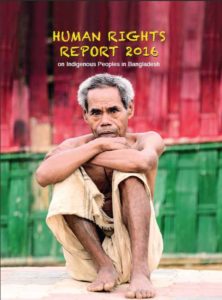
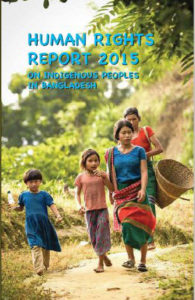
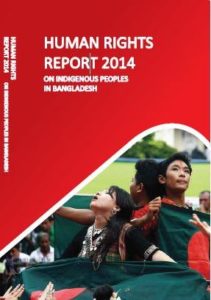
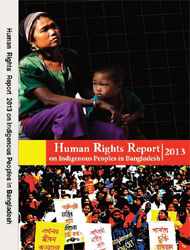
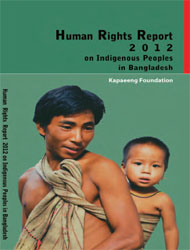
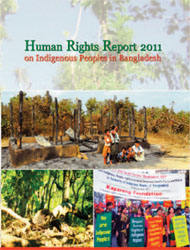
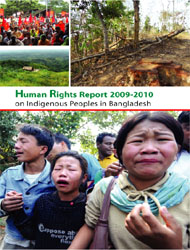

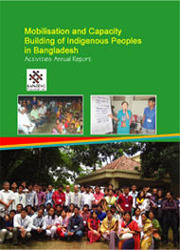



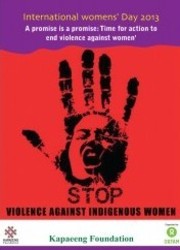
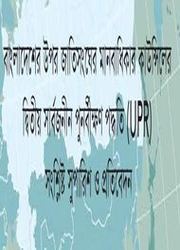
 February 23rd, 2016
February 23rd, 2016  KapaeengUser
KapaeengUser  Posted in
Posted in 